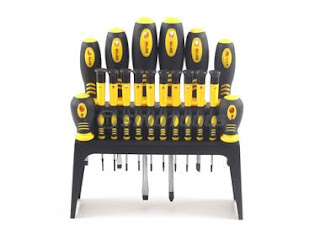What Is a Sledge Hammer?
Sledgehammers are large, long-handled striking tools designed to deliver as much force as possible to an area or object. Sledgehammers are much larger and heavier than the hammers used to drive nails, and are most often used for demolition, or for striking thicker and heavier objects.
Sledge hammers usually have straight handles and can be swung with either hand. The hammer head of a sledgehammer is almost always made of steel and is usually flat on the striking surface, designed to deliver as much blunt force as possible to the target area.

Sledge Hammer Uses
Sledgehammers are a very simple tool, but they are surprisingly versatile. Whether used commercially or at home, the sledgehammer works and is an important basic tool. Here are some of the most common uses for sledge hammers:
-Demolition of drywall, concrete, wood, etc.;
-Driving steel wedges for splitting firewood or building stone;
-Dislodging firmly stuck items;
-Driving fence posts into the ground;
-Straightening bent metal objects.
Types of Sledge Hammers
The standard sledge hammer. From removing unwanted walls during home renovations to installing fences in the yard, standard sledgehammers are popular tools for DIY enthusiasts. They come in different lengths and handle weights, depending on the intended use. The longest and heaviest sledgehammers will typically exceed three feet and weigh up to 20 pounds. A standard sledgehammer has a cylindrical head with flat, or slightly curved, striking surfaces on both sides. Wood and fiberglass are both common handle materials.
Engineer's Hammer. Engineer hammers are similar in appearance to standard sledge hammers, but they are smaller in size, usually between 12-18 inches. They are also lighter in weight and can be operated with one hand. Engineer hammers are lightweight and compact, making them ideal for light demolition work. Or it can be used to drive small to medium sized nails into wood, and to strike stone or wood with a steel chisel.
Post maul: Similar in appearance to large, long-handled standard sledge hammers, post maul sledge hammers are designed to drive fence posts and stakes deeply into the soil. Their cylindrical heads are usually larger in diameter than standard sledge hammers, with perfectly flat, circular faces designed to make striking accurately as easy as possible.
How to Choose a Sledge Hammer
To choose the right sledgehammer, you first need to specify the type and characteristics of the job. For example, is there a large and heavy job that requires a lot of striking power? Heavy jobs such as demolishing concrete walls are suitable for a standard sledgehammer with a long handle, and smaller, easier jobs require a shorter, lighter hammer.
Another factor to consider is the upper body strength of the user. Sledge hammers have long, heavy handles, and solid steel heads. Swinging them requires a lot of chest, shoulder and upper back strength. To prevent injury, proper swinging technique also requires the use of the legs. Any sledgehammer that does not match the strength of the user will not work.
By the same token, don't choose a hammer that is too light for the work you want to do. In fact, it's hard to guess the correct length and weight of a hammer without trying it out. That's why it makes sense to borrow one from a friend, neighbor or family member before you buy. If possible, try some lengths and weights and then make an informed decision.
Sledge Hammer Maintenance
There are many new models of sledgehammers with carbon fiber handles on the market today, which have a long enough life of their own and require little maintenance. Wooden handled sledgehammers, on the other hand, may require quarterly oiling of the handle to prevent decay or damage.








.jpg)

.jpg)









